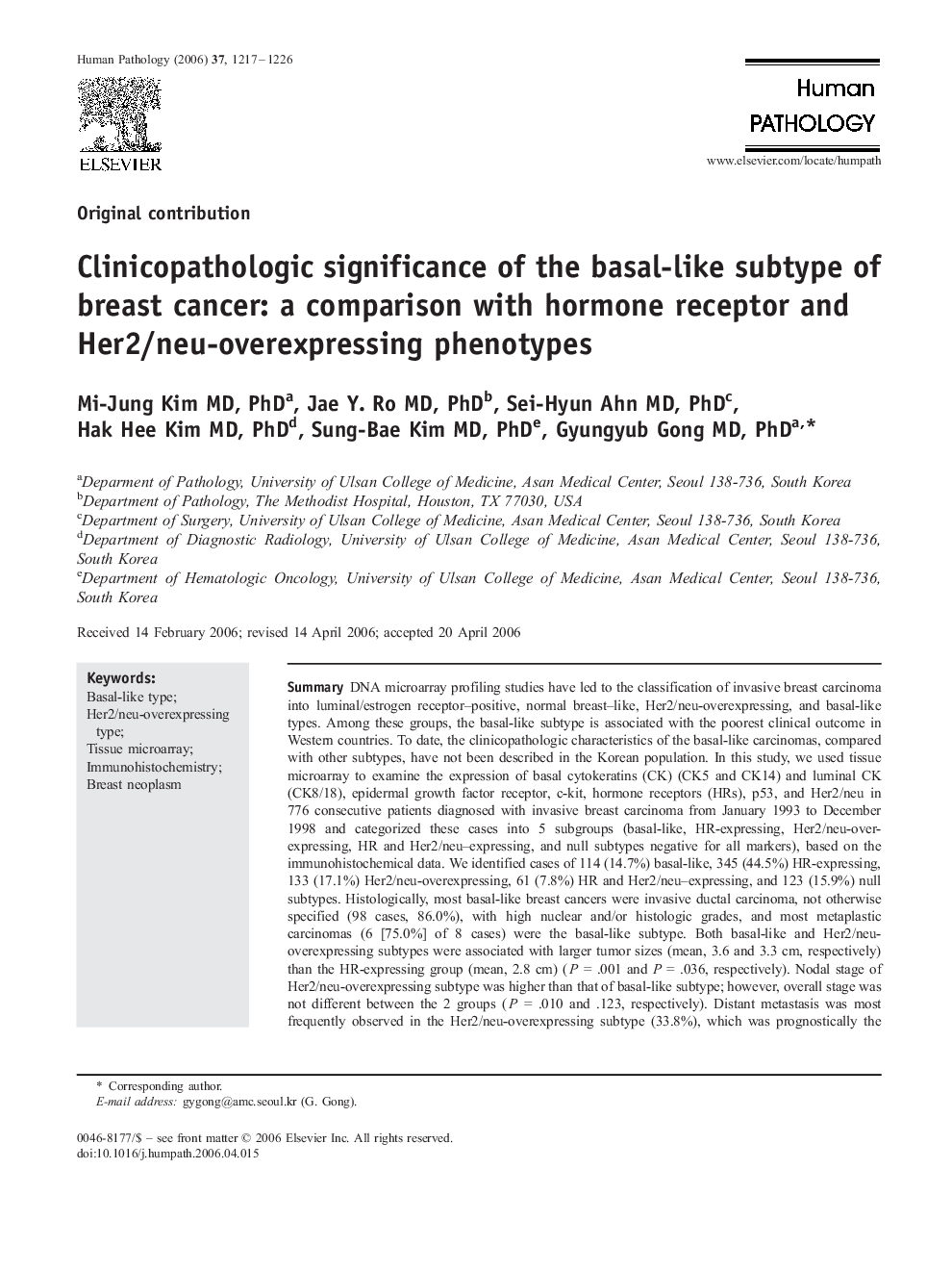| کد مقاله | کد نشریه | سال انتشار | مقاله انگلیسی | نسخه تمام متن |
|---|---|---|---|---|
| 4135610 | 1271509 | 2006 | 10 صفحه PDF | دانلود رایگان |

SummaryDNA microarray profiling studies have led to the classification of invasive breast carcinoma into luminal/estrogen receptor–positive, normal breast–like, Her2/neu-overexpressing, and basal-like types. Among these groups, the basal-like subtype is associated with the poorest clinical outcome in Western countries. To date, the clinicopathologic characteristics of the basal-like carcinomas, compared with other subtypes, have not been described in the Korean population. In this study, we used tissue microarray to examine the expression of basal cytokeratins (CK) (CK5 and CK14) and luminal CK (CK8/18), epidermal growth factor receptor, c-kit, hormone receptors (HRs), p53, and Her2/neu in 776 consecutive patients diagnosed with invasive breast carcinoma from January 1993 to December 1998 and categorized these cases into 5 subgroups (basal-like, HR-expressing, Her2/neu-overexpressing, HR and Her2/neu–expressing, and null subtypes negative for all markers), based on the immunohistochemical data. We identified cases of 114 (14.7%) basal-like, 345 (44.5%) HR-expressing, 133 (17.1%) Her2/neu-overexpressing, 61 (7.8%) HR and Her2/neu–expressing, and 123 (15.9%) null subtypes. Histologically, most basal-like breast cancers were invasive ductal carcinoma, not otherwise specified (98 cases, 86.0%), with high nuclear and/or histologic grades, and most metaplastic carcinomas (6 [75.0%] of 8 cases) were the basal-like subtype. Both basal-like and Her2/neu-overexpressing subtypes were associated with larger tumor sizes (mean, 3.6 and 3.3 cm, respectively) than the HR-expressing group (mean, 2.8 cm) (P = .001 and P = .036, respectively). Nodal stage of Her2/neu-overexpressing subtype was higher than that of basal-like subtype; however, overall stage was not different between the 2 groups (P = .010 and .123, respectively). Distant metastasis was most frequently observed in the Her2/neu-overexpressing subtype (33.8%), which was prognostically the worst subgroup of breast cancers. In contrast to previous findings from Western countries, our analyses reveal that the Her2/neu status is the most important prognostic factor of breast cancers.
Journal: Human Pathology - Volume 37, Issue 9, September 2006, Pages 1217–1226